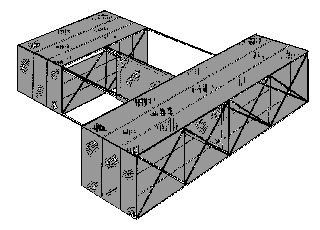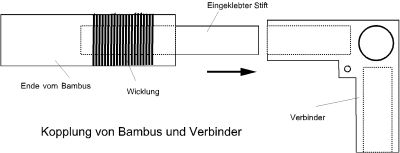Sauls - Story
Since which I saw the illustrations of the Sauls barrage Kites in the Pelham's book [1], the kite fascinated me. It has such a thing from an old airplane. After I saw it flying also still with my kite buddy Ulf, I procured the book "Drachen mit Geschichte" [2] and copied myself it from it. First in 8/10mm wood and later in 6mm carbon and 10mm wood. The connectors I manufactured myself. I took a 12mm plastic plate by means of saws, boring and sharpening.

After our first large-scale project (7.5m-LynnBox) the choice fell with the next large kite of Uwe and me also on the Sauls. This time it should become however alike two. We did not have a requirement on an accurate historical reproduction. We wanted a reproduction with us today the available means, techniques and materials. It should fly and look in the sky like a Sauls Barrage Kite. The connectors because of the good experiences likewise again from a plastic plate manufactured. At this time, material was not expensive, so we took pipes from carbon (12mm) and the cloth from heavy spinnaker (90g/mē). The cell size should amount to this time 1,4m. The form was changed however something. More toward to historical photos. Is to be called: Cloth compound from three stripes, seam cords, larger gap between front and rear cell, no complete sleeves and separate central sail. The detail photos of a original Sauls, like into the "Fang den Wind" [11] were to us at that time unfortunately not yet at the disposal. Our luggage measure should not exceed 2m for transportation reasons.

With our first starting attempt on the city goods south Berlin it should however show up that our diagonal pipes despite lining with 10mm and 8mm - pipes were too weakly laid out. They broke immediately when starting. Thus which do? We decided for bamboo, better Tonking pipes. The pipes were provided with cord rewinding stands, and at the ends short carbon pipes were bonded, so that we could use the existing links further. This turned out as practicable solution and the test flight could in the spring 1997 successfully in Stoelln be completed.